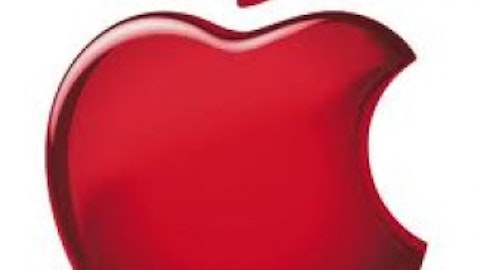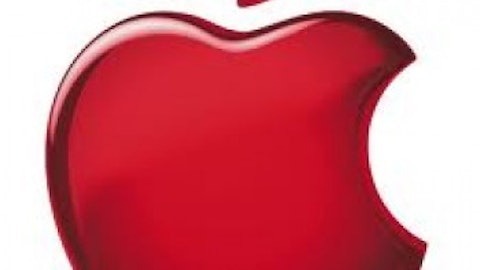I own at least two pairs of Skullcandy Inc (NASDAQ:SKUL) headphones — for what I paid, the sound quality is excellent; I can’t complain.
But thankfully, I don’t own any shares of Skullcandy Inc (NASDAQ:SKUL), the company. Since its IPO roughly two years ago, it has lost nearly 75% of its value, and based on emerging trends, things could only get worse.

The case for Skullcandy
Skullcandy Inc (NASDAQ:SKUL) is a maker of (mostly) budget earbuds and headphones. Despite the fact that the company faces innumerable competitors, it has somehow managed to stand out — a combination of brightly colored earbuds and celebrity endorsements may have helped.
That brand recognition, combined with the increasing popularity of mobile devices, may have made Skullcandy Inc (NASDAQ:SKUL) an attractive investment.
There has even been talk of a buyout. Bloomberg named the company a “takeover target” in January, specifically citing Bose and Sony as possible acquirers. If either of those companies was really considering buying Skullcandy back then, it’s good that they waited — shares are down 34% year to date.
Skullcandy’s disappointing earnings
Skullcandy’s selloff hasn’t just been the product of an overvalued IPO. Rather, it has been commensurate with its financial performance, which has been terrible since the company went public.
Most recently, Skullcandy’s second quarter earnings report showed a 30% drop in sales from the prior year. At the same time, the company announced the resignation of its CFO.
Skullcandy’s home market, North America, was particularly hard hit, with sales slumping 39%. Coincidentally, international sales rose by a nearly equal percentage (just over 40%), but it was not enough to offset the North American decline.
Skullcandy’s CEO said that the company is establishing a base for a turnaround. Unfortunately, that’s going to be difficult.
Mobile device manufacturers are following Apple’s lead
That’s because more mobile device makers are bundling premium headphones with their devices.
LG unveiled its newest smartphone last Wednesday, the G2. Besides uniquely placed buttons (LG is putting them on the back), the one thing that stuck out about the device was the pair of earbuds the company announced with it.
LG’s Quadbeat 2 earbuds reportedly offer premium bass and less distortion than competing earbuds. It isn’t clear, but it’s likely that LG will bundle the earbuds with the G2.
Then there’s Motorola. The company has consistently cost Google Inc (NASDAQ:GOOG) millions of dollars every quarter since the search giant purchased it in 2011 (last quarter, the loss was over $200 million).
But that could change. Motorola’s new smartphone, the Moto X, looks like it will be a hit. Although it doesn’t have the best specs, the Moto X offers something no other phone does — the ability to customize the color of the device.
Of course, if you’re buying your phone for its custom color scheme, then you’re obviously going to want some matching headphones. In that case, Motorola has got you covered.
Motorola itself isn’t making them (a company called SOL Republic is), but would-be buyers of the Moto X have the option to purchase headphones in the same color as their handset (they can also get a matching Bluetooth speaker).
If the Moto X is going to sell, it’s going to be because of that level of customization — in a way, colored earphones could net Google Inc (NASDAQ:GOOG) hundreds of millions of dollars.
Sony has been making quality headphones for years. Now it appears to be using its headphones to help it enter the mobile market.
The Japanese electronics giant offered a free pair of premium headphones to consumers in the U.K. that pre-ordered its Xperia Z smartphone back in February. It’s currently running a similar promotion that offers free headphones to buyers of its Xperia Z tablet.
Apple has long seen the value in bundling earbuds
It isn’t a stat that Apple Inc. (NASDAQ:AAPL) analysts pay attention to, but sales of the company’s iconic, white earbuds have no doubt played a key role in Apple’s resurgence.
They formed the basis of the company’s iPod advertising; and, in the process, becoming a sort of status symbol.
Apple isn’t giving up on its earbuds anytime soon. Last year it refreshed them, unveiling the new “EarPods” alongside the iPhone 5. Apple continues to bundle earbuds with all its iPods and iPhones.
Investors shouldn’t expect another refresh this year — last year it said the EarPods had been in development for three years — but it will be interesting to see if Apple does anything special for its widely rumored colored iPhone.
Apple is expected to an unveil a cheaper, plastic iPhone available in different colors this fall. The iPhone 5C (as it’s rumored to be called) will likely be aimed at consumers on a budget.
Investing in Skullcandy
Skullcandy has been a terrible investment since its IPO, and though it’s been heavily shorted, the bears have been completely right thus far.
Now trading with a below-market price-to-earnings ratio of 14, Skullcandy is more reasonably priced, and could be due for a resurgence.
However, I wouldn’t bet on it. Mobile devices makers like Motorola, LG, and Sony are increasingly bundling headphones with their devices as a way to differentiate them. Apple, which started the trend, isn’t getting away from it anytime soon.
For now, investors should continue to avoid Skullcandy.
The article One of 2011’s Most Disappointing IPOs Could Get Even Worse originally appeared on Fool.com and is written by Sam Mattera.
Sam Mattera has no position in any stocks mentioned. The Motley Fool recommends Apple and Google. The Motley Fool owns shares of Apple, Google, and Skullcandy. Sam is a member of The Motley Fool Blog Network — entries represent the personal opinion of the blogger and are not formally edited.
Copyright © 1995 – 2013 The Motley Fool, LLC. All rights reserved. The Motley Fool has a disclosure policy.





